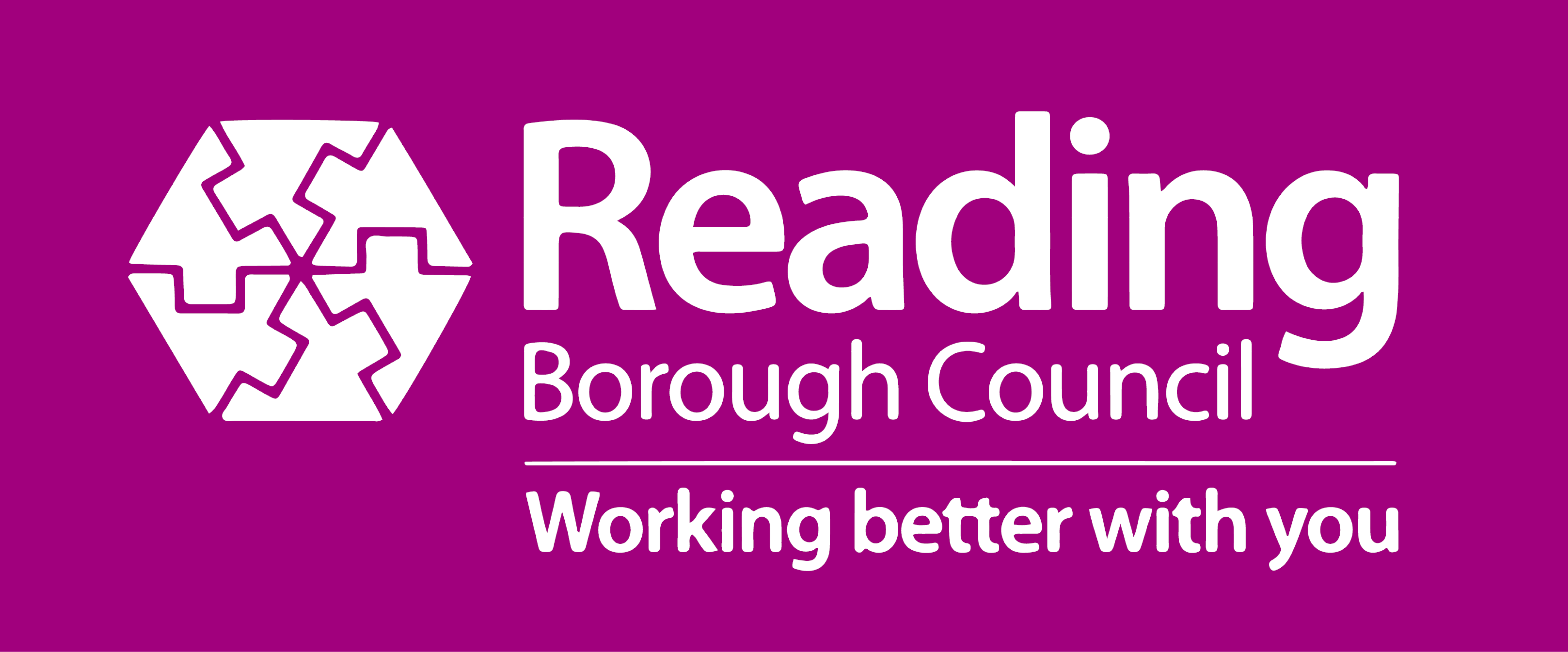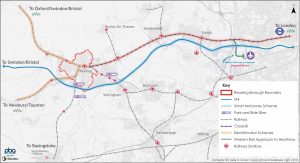Reading Transport Strategy 2036
Co-creating the future of transport in Reading
Closed Submit your comments

Overview
Reading’s Transport Strategy 2036 signals a new phase in the town’s development
Transport matters to all of us. It connects us with our workplaces, schools, friends and families. It affects our health, the air we breathe, and the streets where we live. It helps our economy to grow and our town to thrive, and it can make the environment around us clean and friendly or dirty and dangerous.
Future travel in Reading is about more than moving people from A to B. It must be affordable and accessible, improve people’s health and wellbeing, support a growing and inclusive economy, enable a carbon neutral future for Reading and harness the latest technology.
We’re planning for the future of transport in Reading. The strategy we develop now will shape our town’s transport network to 2036 and beyond, informing the decisions we take, the funding we secure and the changes we make.
Tell us what you think and let’s get Reading moving!
Our Vision
Our vision for Reading is an economically successful city region that is dynamic, smart, green and sustainable; where low-carbon living is the norm, and where everyone enjoys equal opportunities and a high quality of life.
Transforming how we travel is essential to achieving this vision.
Our Themes:
Five transport themes will help us achieve our vision.
Click on the icons below to explore our themes.
Connecting People and Places
Supporting Healthy Lifestyles
Creating a Clean and Green Reading
Enabling Inclusive Growth
Embracing Smart Solutions
Connecting People and Places
We want a town where people and goods can get where they need to go using transport that is fast, affordable and well connected. We want reliable journey times, less congestion and sustainable options that are accessible to all.
What’s it like now?
- 57% of people in Reading think the roads are too congested1.
- Major roads such as the IDR (inner distribution road) carry ‘through traffic’ (without stopping in Reading) that creates additional noise and air pollution. Our analysis shows up to a third of trips made in peak periods could avoid using the IDR as a through route, if enhanced orbital routes were provided2.
- Bus usage in Reading is the third highest in the country outside of London and has increased by 23% since 2010, compared to a UK-wide reduction of 11%3.
- Reading station is the fourth busiest station in the country outside of London and has recently been voted best in the country in a national poll4. The new Elizabeth line, when opened, will provide direct services to central and east London.
- Around 35% of trips into town are made on foot or by bike5.
How could it be better?
- Improve public transport to make it faster, cheaper and more accessible.
- Increase public transport options such as expanding bus networks, creating ‘priority routes’ and introducing new Park & Ride sites.
- Tackle congestion with schemes that charge drivers in certain zones or at certain times of the day, or make some areas car-free altogether.
- Encourage the use of shared transport such as car clubs, lift share and cycle hire.
- Increase capacity on the network, such as more buses and bus lanes, additional spaces for cyclists and pedestrians and new forms of transport like river taxis.
References: 1 National Highways and Transport Network, Public Satisfaction Survey | 2 Reading Borough Council, Reading Transport Model | 3 Department for Transport, Annual Bus Statistics | 4 Office of Road and Rail, Estimates of Station Usage | 5 Reading Borough Council, Annual Cordon Count 2018
Supporting Healthy Lifestyles
We want a town where healthy, active travel – like walking and cycling – is safe and easy. We want fewer accidents and improved personal safety with less crime and fear of crime. We want people to adopt healthy behaviours from a young age and to see the benefits on their physical and mental health.
What’s it like now?
- In Reading, 28% of adults walk and 5% cycle at least 3 times a week. This is above the national average, but could be even higher6.
- Nationally around 46% of young people walk or cycle to school and improving on that level in Reading would be a great way to keep young people healthy and active7.
- In more deprived communities in Reading, life expectancy is 8 years lower for men and 6 years lower for women than in better off communities8.
- Every year around 400 people are hurt in accidents on Reading’s roads9.
- Levels of violent crimes are rising locally, in line with national trends, with an average of 127 acts of violence recorded every day by Thames Valley Police10.
How could it be better?
- Encourage walking and cycling by improving the quality and connectedness of pedestrian and cycle routes, creating spaces that are free of cars and providing facilities like secure cycle parking and changing rooms at destinations.
- Reduce accidents and injuries in key spots like schools and busy junctions by managing the speed and flow of vehicles or creating car free zones.
- Encourage healthy behaviours from a young age, such as making it easier to get to school on foot or by bike.
- Improve personal safety on the network through better CCTV, street lighting and better designed public spaces to increase natural surveillance.
References: 6 Sport England, Active Lives Survey | 7 Department for Transport, National Travel Survey | 8 Public Health England, Health Inequalities Dashboard | 9 Department for Transport, Road Accidents and Safety Statistics | 10 Office for National Statistics, Annual Crime Statistics
Creating a Clean and Green Reading
We want to create a carbon-neutral town with great air quality, low emissions, minimal noise pollution and plenty of green spaces. Reading’s economy and population will continue to grow and we want this to be supported by high quality and environmentally sustainable infrastructure.
What’s it like now?
- Transport is now the largest contributor of greenhouse gas emissions in the UK11.
- The Council has declared a Climate Change Emergency and committed to a carbon neutral Reading by 203012.
- Carbon Dioxide levels in Reading have fallen by 41% since 2005 but there is more to do, such as reducing high levels of Nitrogen Dioxide and other dangerous pollutants that contribute to poor air quality13.
- Poor air quality causes more than 60 extra deaths a year in Reading14.
- Pollution and poor air quality affects children, older people and those with existing health problems the most15.
How could it be better?
- Provide attractive alternatives to the private car such as better public transport and high quality, well connected walking and cycling routes.
- Encourage the use of more environmentally friendly vehicles by providing infrastructure such as on-street charging points for electric cars.
- Discourage the use of polluting vehicles by introducing schemes that charge for their use, such as a Low Emissions, Clean Air or Congestion Zone.
- Reduce the pollution from freight and goods deliveries by making more efficient use of loading bays and providing a consolidated delivery centre for Reading to reduce the number of individual deliveries into town.
References: 11 Department for Transport, Transport Statistics Great Britain | 12 Reading Borough Council, Climate Change Emergency | 13 Reading Borough Council, Climate Change Emergency | 14 Public Health England, Estimating Local Mortality Burdens associated with Particulate Air Pollution | 15 Reading Borough Council, Air Quality Annual Status Report
Enabling Inclusive Growth
We want to see an economically successful Reading that continues to grow and attract leading businesses to invest here. We want this success to be shared so that everyone can benefit from better education and housing, rising wages and more jobs. We want to support the growing population and ensure everyone lives in a vibrant, well connected community.
What’s it like now?
- Reading has a successful and growing economy, second only to London in the South East, with above average wages and levels of employment and the largest concentration of information and communication technology companies in the UK16.
- The benefits of economic success are not equally shared and Reading is the third most unequal city in the UK17.
- Reading is a net importer of workers: more people travel into Reading to work than travel out to work elsewhere18. And of those that travel into the Borough, 86% do so by car19.
- Reading’s population will grow by around 12% in the next 20 years. That’s over 20,000 more people who will need homes, jobs, school places – and a way to connect them all20.
- Thousands of new homes will also be delivered every year in neighbouring authorities including Wokingham and South Oxfordshire, from where many workers travel into Reading21.
How could it be better?
- Increase capacity on the network, such as more buses and bus lanes, additional spaces for cyclists and pedestrians and new forms of transport like river taxis.
- Provide better interchange facilities and services for people travelling into the Borough, for example more Park & Ride sites and connections from stations to business parks.
- Ensure public and community transport is affordable and accessible, making sure it serves all communities across the Borough especially areas that are isolated or economically deprived.
- Ensure that new developments of houses and offices provide investment for sustainable travel options and high quality supporting infrastructure.
References: 16 Reading Borough Council, Corporate Plan 2018-21 | 17 Centre for Cities, Cities Outlook | 18 Reading Borough Council, Reading Transport Model | 19 Office for National Statistics, 2011 Census Travel to Work Data | 20 Office for National Statistics, Population Estimates | 21 Emerging Local Plans for Wokingham Borough Council and South Oxfordshire District Council
Embracing Smart Solutions
We want Reading to be a smart, connected town of the future. We want to harness the technology of today and be bold and agile enough to embrace the innovations of tomorrow to help us travel faster, cleaner – or not at all!
What’s it like now?
- Reading has a thriving economy with the largest concentration of information and communication technology companies in the UK.
- New technologies can be expensive to adopt in the initial stages which could be barrier for those on lower incomes.
- Transport infrastructure may need to be adapted to ensure everyone can benefit from new technologies.
- New technologies can involve some risk and require us to be ambitious and agile if we want to benefit from the new opportunities.
How could it be better?
- Use technology to provide more travel options that are faster, greener or safer such as hybrid or electric vehicles, zero emission vehicles and driverless cars.
- Use real-time data to better manage traffic flows or provide information to people to enable them to make more informed transport choices about how they travel.
- Provide integrated transport services like car clubs, cycle hire and buses through a single user account or app, meeting your transport needs in a similar way to a mobile phone contract.
- Remove the need to travel with improved technology such as 5G and the ability to work from home or access services remotely.





 Send us your thoughts by completing the form below.
Send us your thoughts by completing the form below.